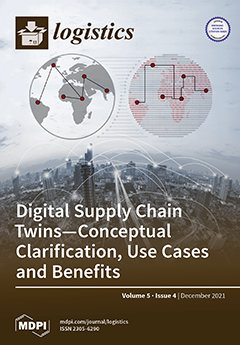Background: The use of blockchain technology for tracking and tracing (T&T) in supply chains is the subject of lively debate in scientific literature. However, distributed ledger technology (DLT) does not have to have the characteristic blockchain structure and often performs better without
[...] Read more.
Background: The use of blockchain technology for tracking and tracing (T&T) in supply chains is the subject of lively debate in scientific literature. However, distributed ledger technology (DLT) does not have to have the characteristic blockchain structure and often performs better without such a structure. Generalized DLT for T&T in supply chains has rarely been discussed in the existing literature.
Methods: This article presents an exploratory case study research of eight companies to identify the main goals, and problems that the companies have when they engage in T&T. This practical perspective is complemented by a theoretical systems thinking perspective. Based on these two foundations, we discuss the usefulness of blockchain technology and, more generally, DLT for T&T in supply chains.
Results: Based on our analysis, DLT is only necessary in special cases, e.g., when the owners of the data have an interest in deleting the data, but the data stakeholders do not. In the other cases examined, DLT competes with other technologies, such as conventional, centralized databases in combination with digital signatures. Furthermore, it became evident that DLT can only be useful for supply chain tracing. The technological features of DLT do not provide any benefit for supply chain tracking, i.e., the timely communication of the status of a physical good.
Conclusions: Distributed ledgers often have a disadvantage in that they are very complex and, therefore, expensive. DLT should preferably only be used when it is technologically necessary or the simplest/cheapest choice, which is probably not all that often. Finally, the usefulness of distributed ledger technology and its integrated smart contract technology is highly dependent on how easy it is to link the real physical world to a digital record/contract in an error-free and tamper-proof way. Currently, such a definite link exists only in very few cases and is often impossible.
Full article





